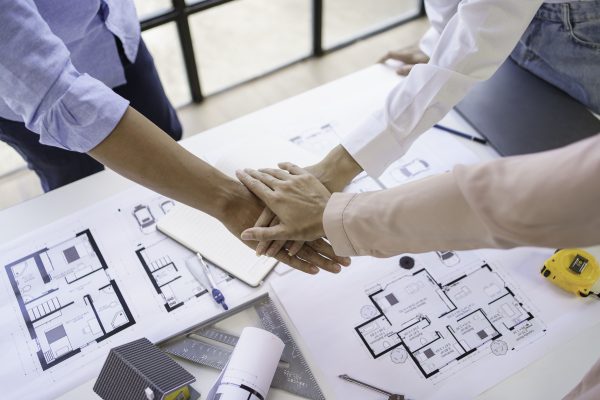
In architecture, a successful project doesn’t just hinge on stunning designs or innovative construction techniques. It depends heavily on the relationships built between firms and their clients. According to Forbes’ “50 Stats That Prove the Value of Customer Experience,” companies that prioritize customer experience generate 4-8% higher revenue than their industry counterparts.
After all, architecture is a collaborative endeavor, and client satisfaction is critical to the long-term success of any firm. Mastering client relationships can set an architecture firm apart, fostering trust, loyalty, and referrals. In this guide, we’ll explore the strategies architecture firms can use to strengthen client relationships, ensuring that both the design process and the client experience are seamless and rewarding.
Fundamental Aspects for Mastering Client Relationships
-
Understanding the Client’s Vision
One of the fundamental aspects of successful client relationships is understanding what clients want to achieve. Architecture is a creative field, but it’s also a service industry. Clients come to you with a vision, even if it’s not fully developed. Your job is to listen attentively, ask the right questions, and extract the key elements of their dream that you’ll translate into design.
Start with in-depth consultations. Go beyond basic functional needs by asking about the client’s lifestyle, aesthetic preferences, long-term goals, and pain points. The more you understand their expectations, the more likely you’ll be able to deliver a design that feels custom-tailored.
During initial meetings, practice active listening. This involves focusing fully on what the client is saying, noting their body language, tone, and nuances, and ensuring you ask follow-up questions to clarify any uncertainties. This creates a stronger connection and helps clients feel understood.
At BizForce, our architects are highly skilled in turning client visions into reality. They are not only adept at delivering innovative and functional designs but also excel in building strong client relationships. Our team understands the importance of thorough consultations and actively listens to each client’s unique needs. By going beyond surface-level requirements and engaging deeply with clients, BizForce’s architects ensure that every project is tailored to the client’s vision, creating designs that are both aesthetically pleasing and aligned with their goals.
-
Clear and Transparent Communication

Communication is the backbone of client relationships, and architecture firms are no exception. Design projects can be complex, and clients may not always understand the technical aspects of your work. It’s your responsibility to keep communication clear, transparent, and frequent.
Set expectations early. Be clear about the timeline, budget, and scope of the project from the outset. This helps prevent misunderstandings later on. If any changes or delays arise, communicate them to the client immediately, along with the reasons why. Avoid surprises that might erode trust.
Additionally, make sure your client knows how the project is progressing. Schedule regular check-ins via email, phone, or in person, depending on the client’s preferences. These updates don’t need to be overly detailed, but should give the client a sense of control and awareness over the project’s timeline and stages.
Technical simplicity is also key. Clients might not be familiar with architectural jargon, so avoid overwhelming them with technical details. Instead, translate technical aspects into layman’s terms when possible. This helps build confidence and ensures the client fully understands your plans and progress.
-
Managing Client Expectations
No matter how skilled an architect is, managing expectations throughout the project is key. This includes being upfront about what’s possible within the client’s budget, time constraints, and site limitations.
Therefore, be realistic. Don’t over-promise about what you can deliver. It’s always better to under-promise and over-deliver. If a client requests something that isn’t feasible, explain the challenges clearly and suggest alternative solutions that still align with their vision. Clients will appreciate your honesty in the long run.
With documentation, keep meticulous records of all decisions, contracts, and change orders. This helps eliminate confusion if the scope of the project shifts and prevents misunderstandings from harming client relationships.
Lastly, build flexibility. Architectural projects rarely go exactly as planned. Weather, supply chain issues, or unforeseen site problems may cause delays. Build a cushion into your timeline, and communicate early if adjustments are needed. This shows the client that you’re prepared and considerate of potential roadblocks.
-
Personalize the Client Experience
Each client is unique, and so should the approach to working with them. Take the time to understand your client’s personality and preferences, and tailor your communication style accordingly.
Adapt to communication preferences. Some clients may prefer frequent, detailed updates, while others might want minimal communication and expect only major milestones to be reported. Understanding these preferences early on will make the client feel comfortable with the process.
Also, remember the small things. Personal touches can go a long way in making clients feel valued. Whether it’s remembering a significant event in their lives, such as a birthday or an anniversary, or simply sending a thank-you note after a successful project, these gestures help reinforce positive client relationships.
-
Provide a Collaborative Design Process
Clients should feel like active participants in the design process. Giving them opportunities to provide feedback on key points keeps them invested and satisfied with the final outcome.
Use visualization tools. Modern architecture firms have access to a wide range of tools like 3D modeling and virtual reality. These can help clients visualize the project before it’s built, making it easier for them to provide feedback and feel more confident in the design.
Furthermore, offering options is also important to excel in client relationships. Instead of presenting a single design solution, offer clients a few alternatives for consideration. This empowers them to make decisions and feel like their input is valued. Collaborative work fosters a stronger bond between architect and client.
Lastly, be open to feedback. Sometimes, clients may not like elements of the design or may want to make changes midway through the project. Accept feedback gracefully, and where possible, find ways to accommodate their requests without compromising the integrity of the project.
-
Be a Problem Solver, Not Just a Designer
Every architectural project will face challenges. Whether it’s dealing with zoning laws, material shortages, or construction delays, the way you handle these challenges will define your client relationships.
Stay solution-oriented so that when problems arise, clients will look to you for solutions. Stay calm, proactive, and focused on finding the best possible outcome for both the client and the project. Communicate any issues as soon as they arise, along with a proposed solution.
Anticipate issues. Wherever possible, try to foresee potential problems and address them before they become significant. This might involve thorough research on zoning regulations, conducting soil tests, or collaborating closely with contractors to ensure that the project stays on track.
-
Post-Project Follow-Up
Your client relationships shouldn’t end when the projects are completed. Post-project follow-ups help ensure client satisfaction and pave the way for future collaborations or referrals.
After project completion, schedule a meeting with the client to review the project. Ask for feedback on both the final product and the process. This helps you understand areas for improvement and reinforces your commitment to client satisfaction.
Additionally, regularly check in with past clients to see how they’re enjoying their new space. This not only demonstrates that you care about their long-term satisfaction but also keeps you top of mind for future projects or referrals.
Conclusion: Building Long-Lasting Client Relationships
Mastering client relationships takes time and effort, but the payoff is enormous. By prioritizing clear communication, managing expectations, personalizing the experience, and collaborating throughout the design process, architecture firms can foster long-lasting partnerships that lead to repeat business and word-of-mouth referrals. In the end, satisfied clients are not only the key to a successful project—they are the key to a successful architecture firm.
At BizForce, we understand that building strong client relationships is at the heart of successful architecture. Our team of skilled, remote architects is committed to helping firms like yours deliver exceptional results while maintaining seamless client communication and collaboration. By partnering with BizForce, you gain access to talented professionals who can enhance your capacity, meet tight deadlines, and exceed client expectations—all while keeping costs manageable. Let us help you elevate your projects and strengthen your client relationships. Contact BizForce today to explore how our architecture staffing solutions can support your firm’s growth and success!
